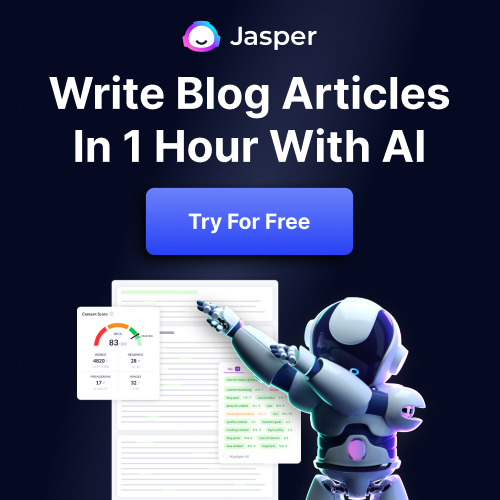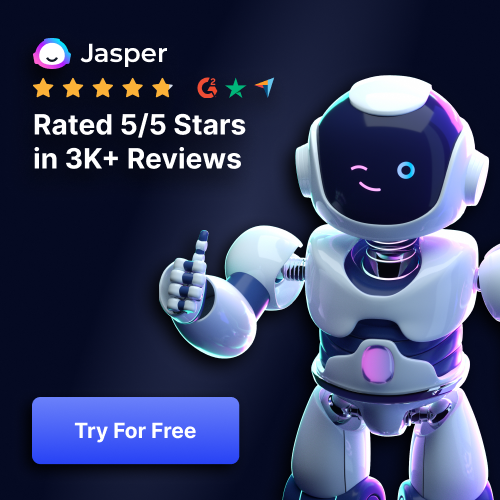10 Secrets to Writing SEO-Friendly Content That Ranks on Google

-
Unlocking the Power of SEO: A Comprehensive Guide
-
Secret 1: Start with keyword research
-
Secret 2: Focus on user intent
-
Secret 3: Optimize your content for SEO
-
Secret 4: Utilize AI copywriting tools
-
Secret 5: Create long-form, in-depth content
-
Secret 6: Use headings and subheadings effectively
-
Secret 7: Include internal and external links
-
Secret 8: Optimize your images
-
Secret 9: Improve readability and user experience
-
Secret 10: Monitor and update your content
Disclosure: Some of the links in this article may be affiliate links, which can provide compensation to me at no cost to you if you decide to purchase. This site is not intended to provide financial advice and is for entertainment only.
Unlocking the Power of SEO: A Comprehensive Guide
SEO-friendly content is the key to driving organic traffic and boosting your website's search engine rankings. With the rise of AI-powered writing tools like Jasper AI, creating high-quality, keyword-rich content has never been easier. In this article, we will reveal 10 secrets to writing content that ranks on Google using the latest AI copywriting and digital marketing techniques. We'll delve into the importance of understanding your audience, the power of keyword research, and the role of AI in modern content creation. We'll also discuss how to optimize your content for SEO, the benefits of long-form content, and the importance of using headings and subheadings effectively.
Secret 1: Start with keyword research
Keyword research is essential for understanding what your target audience is searching for and crafting content that meets their needs. Use tools like Google Keyword Planner or AI content generation software to identify relevant search terms and build your content strategy around them. By understanding the keywords that your audience uses, you can tailor your content to their interests and questions, increasing the likelihood that they'll find your content through search engines. Keyword research is not a one-time task; it's an ongoing process that requires you to stay up-to-date with changes in your audience's behavior and preferences.
Secret 2: Focus on user intent
Understanding user intent is crucial for creating content that ranks well on Google. Tailor your content to address the specific needs and questions of your target audience, and make sure it offers value beyond just including the right keywords. By focusing on user intent, you can create content that not only ranks well but also provides real value to your readers, making them more likely to engage with your content and return to your site in the future. User intent can be categorized into four types: informational, navigational, transactional, and commercial investigation. Understanding these categories can help you create content that meets your audience's needs at different stages of their journey.
Secret 3: Optimize your content for SEO
Optimize your content by using your target keywords strategically throughout your writing. Include them in your title, headings, and within the body of your content. Make sure to also optimize your meta descriptions and URL structure to maximize your chances of ranking higher on Google. SEO optimization is more than just keyword placement - it's about creating a user-friendly website structure, using clear and descriptive URLs, and ensuring that your site is easy to navigate. Additionally, consider using schema markup to provide search engines with more information about your content, improving your chances of achieving rich results.
Secret 4: Utilize AI copywriting tools
Tools like Jasper AI can help you create high-quality, SEO-friendly content with ease. These AI-powered writing assistants can generate content based on your target keywords, making it easier to create engaging, optimized content that ranks well on Google. AI tools can also help you keep up with the latest SEO trends and changes, ensuring that your content remains relevant and effective. They can also provide insights into your content's performance, helping you understand what works and what needs improvement.
Secret 5: Create long-form, in-depth content
Long-form content is more likely to rank higher on Google as it provides more comprehensive information and is seen as more authoritative. Aim to create content that is at least 1,000 words long, and don't be afraid to go even longer if it's valuable and relevant to your audience. Long-form content allows you to explore topics in depth, providing more value to your readers and making your content more attractive to search engines. However, remember that quality is more important than quantity. It's better to write a shorter piece of high-quality content than a long piece of low-quality content.
Secret 6: Use headings and subheadings effectively
Breaking up your content with headings and subheadings makes it more readable and helps search engines understand the structure of your content. Use your target keywords in your headings to signal the importance of those phrases to both readers and search engines. Headings and subheadings not only make your content easier to read, but they also help search engines understand the content of your page, making it easier for them to index your content correctly. Remember to use your headings in a hierarchical manner, starting with H1 for your title, then H2 for main headings, and H3 for subheadings.
Secret 7: Include internal and external links
Internal links help guide users through your website and improve your site's overall SEO. External links to authoritative sources can help support your content and boost your credibility. Be sure to include at least 6 internal links, such as Unlocking the Power of AI-Generated Content and Decoding AI's Impact on Business, to provide additional resources for your readers. By linking to relevant internal and external content, you can provide additional value to your readers and improve your site's SEO. Remember to use descriptive anchor text for your links, as this helps search engines understand the context of the link.
Secret 8: Optimize your images
Images can help break up your content and make it more visually appealing. Optimize your images for SEO by compressing them, using descriptive file names, and adding alt text with relevant keywords to improve your search engine rankings. Images are an often overlooked aspect of SEO, but they can have a significant impact on your site's performance and rankings. Remember to use high-quality images that are relevant to your content, and consider using infographics or diagrams to explain complex concepts.
Secret 9: Improve readability and user experience
Write in a clear, concise, and engaging manner to make your content more accessible and enjoyable for your audience. Break up large blocks of text with shorter paragraphs, bullet points, or numbered lists, and use a conversational tone to keep your readers engaged. User experience is a key factor in SEO, and creating a positive user experience can help improve your site's rankings. Consider your site's design and navigation, and make sure your site is mobile-friendly, as more and more users are accessing content on their mobile devices.
Secret 10: Monitor and update your content
Regularly review your content to ensure it remains relevant, up-to-date, and optimized for SEO. Updating your content with new information and keywords can help improve your search engine rankings and drive more organic traffic to your website. SEO is not a set-it-and-forget-it strategy; it requires ongoing maintenance and adjustment as search engine algorithms and user behaviors change. Use analytics tools to monitor your content's performance and identify areas for improvement. Look at metrics like bounce rate, time on page, and conversion rate to understand how users are interacting with your content. If you notice that a piece of content is not performing well, consider updating it with new information, adjusting the keyword focus, or improving the readability. Remember, the goal of SEO is not just to drive traffic to your site, but to attract the right kind of traffic users who are interested in your content and are likely to convert.
-
Unlocking the Power of SEO: A Comprehensive Guide
-
Secret 1: Start with keyword research
-
Secret 2: Focus on user intent
-
Secret 3: Optimize your content for SEO
-
Secret 4: Utilize AI copywriting tools
-
Secret 5: Create long-form, in-depth content
-
Secret 6: Use headings and subheadings effectively
-
Secret 7: Include internal and external links
-
Secret 8: Optimize your images
-
Secret 9: Improve readability and user experience
-
Secret 10: Monitor and update your content
Disclosure: Some of the links in this article may be affiliate links, which can provide compensation to me at no cost to you if you decide to purchase. This site is not intended to provide financial advice and is for entertainment only.




